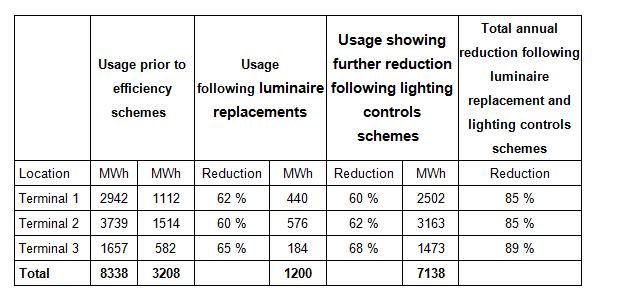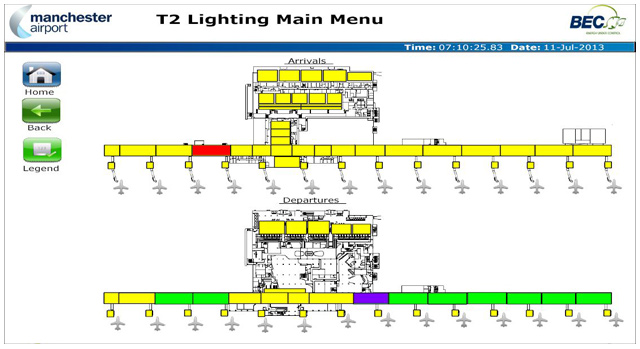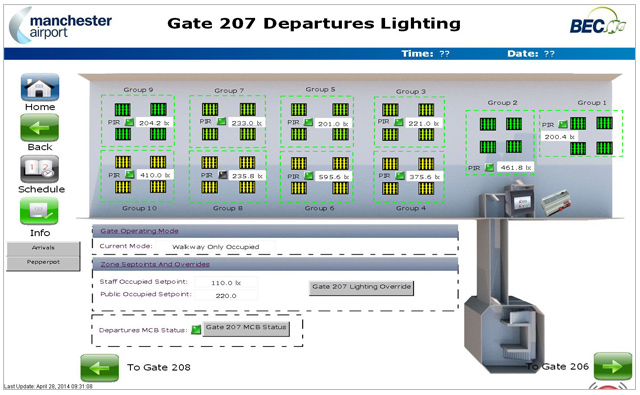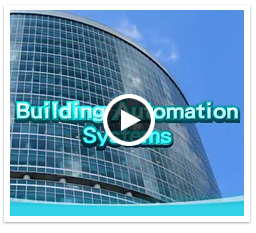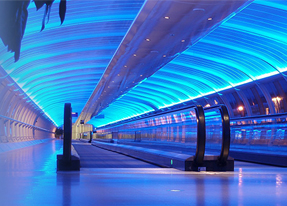 The LOYTEC Competence Center Calon in cooperation with the company Building Environment Controls integrated a modern DALI lighting system with constant light control and occupancy detection in the Manchester Airport’s Terminal 2 already in 2013. In further project stages, the very same lighting control solution has been extended to the public areas of the airport’s terminals T1 & T3, with the aim of further reducing energy consumption following the site wide replacement of the existing luminaires to a full LED solution.
The LOYTEC Competence Center Calon in cooperation with the company Building Environment Controls integrated a modern DALI lighting system with constant light control and occupancy detection in the Manchester Airport’s Terminal 2 already in 2013. In further project stages, the very same lighting control solution has been extended to the public areas of the airport’s terminals T1 & T3, with the aim of further reducing energy consumption following the site wide replacement of the existing luminaires to a full LED solution.
The project included the installation of DALI occupancy/daylight sensors in all areas, this coupled with field intelligent processors, would enable lighting loads to be shed when areas were unoccupied. By introducing this level of automation, further energy reductions would be achieved by utilizing natural daylight.
Individual control panels are installed locally within the terminal switch rooms; these connect the DALI control bus to the BACnet based BMS system via LOYTEC L-DALI controllers. The system design not only provides a fully dynamic lighting control solution, but also provides full system monitoring of the energy consumption, device status along with detailed reporting of fault conditions. Information is available down to individual ballast\sensor level. The system design is based completely around open protocol solutions (BACnet and DALI), from sensors to controllers and also incorporates complete flexibility for any future expansion. The lighting controls system is an integral part of the BMS system, providing a full graphical implementation, which is also combined with detailed reporting functions to support the on-site maintenance teams. The system is a fully web based solution and is therefore available both internally and externally.
In 2014 following successful trials, the BMS system was linked to Manchester Airport’s flight information system (Chroma), which provided further energy savings by the use of dynamic scheduling. Lighting setpoint levels could now be adjusted based on real time flight movements and therefore further maximize the lighting efficiencies/savings.
The fundamental principal behind intelligent lighting controls and intelligent building controls is to ensure we only use energy as and when required. The lighting controls system ensures we use electrical energy to power lighting only when the lighting levels drop below a pre-set threshold and when there is occupancy presence within these areas. Results are quite impressive, with energy reduction of up to 89 %, totalling to a reduction of seven GWh of electrical energy (see table below).
In addition, the installed system now provides in depth management information about each individual luminaire, such as installed date, level of dimming, failures and overall energy use. The data provided by this system is a key tool in supporting Manchester Airport’s asset optimization process.
